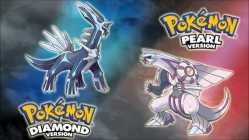>>58337495The ideal Pokémon playthrough strikes a balance between time spent progressing the game and time spent idling in old locations to catch Pokémon, and while the exact ratio for that balance will depend on the individual player, a larger dex usually skews things much farther in the latter's direction by requiring the player to spend much more time in each area if they're looking to complete the dex (which the game heavily encourages).
These 'catching phases' are inherently grindy, but most players are willing to tolerate them if the grind is in the service of some greater goal, like finding a Pokémon with an advantage against an upcoming challenge or filling a new niche on your team; with a larger dex, however, the player's options become wide enough that it's quite likely that they've already landed on a versatile team by the 2nd gym, making catching more Pokémon solely for the sake of dex completion (which, again, is touted as the main goal of the game) and therefore more perceptually tedious (to see one extreme of this spectrum, try catching all Unown forms in GSC). Individual Pokémon species no longer have unique roles to play, but are simply one choice among many.
On an aesthetic level, games with smaller dexes tend to have some amount of distribution contrast between side areas and main routes, promoting more exploration on the player's part to find Pokémon with specific types or attributes - once routes are just as diverse as dungeons, those optional areas no longer feel an special or enticing.
Of course, it's important to note that an overly-small dex is equally as bad as an overly-large one. DP's 150-mon dex is stretched far too thin with honey tree encounters and water types, making exploration mostly unrewarding and turning teambuilding into a matter of straining out the few workable members on offer. 200-300 is the ideal dex size for most situations, although I'd argue that even 300 is beginning to push the limits of balanced design.

